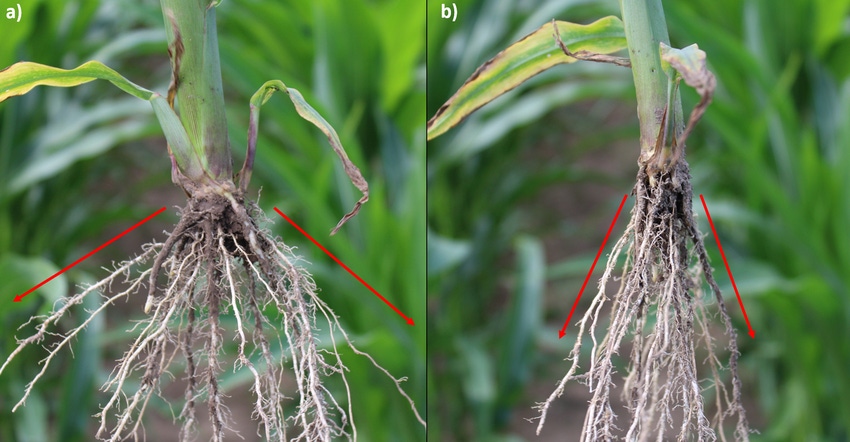December 29, 2021

Planting dates continue to push earlier, and spring weather conditions become more variable. The chances for corn to be planted into less-than-ideal soil conditions increase. Sidewall soil compaction can occur when planting is performed under soil conditions that are too wet.
Let’s take a closer look at questions you may have related to soil compaction:
Why is sidewall compaction important? Sidewall compaction refers to soil compaction and soil smearing in and around the seed furrow that can result in restricted root growth, poor emergence and lost yield potential. Once sidewall compaction occurs at planting, it cannot be cured. Sidewall compaction can haunt you throughout the entire growing season by limiting emergence, root growth, nutrient uptake and yield, and by increasing the chance for lodging prior to harvest. Therefore, taking the necessary steps to prevent sidewall compaction during planting is important.
What causes sidewall compaction? Wet soils are easily compacted, and planting corn into these conditions is the biggest contributor to sidewall compaction. Planter seed-furrow openers can smear and compact the sides of a seed furrow when planting too wet, especially if too much down pressure is applied. When this occurs, the soil in the seed furrow does not properly break and fall around the seed for adequate seed-to-soil contact, and root growth becomes restricted.
Also, when corn is planted too shallow and soils are too wet, soil compaction can occur below the seed, making it difficult for corn roots to penetrate the soil.
How is sidewall compaction identified? In addition to early-season scouting for disease, pests and nutrient deficiencies, scout fields for potential soil compaction issues. Sidewall compaction can result in non-uniform emergence, stunted plant growth and nutrient deficiency symptoms despite adequate soil nutrient levels due to poor root growth. Proper diagnosis of sidewall compaction can be performed by digging corn plants in problem areas and examining the roots.
A healthy corn root system should have adequate and uniform vertical and horizontal root growth all around. However, if most corn roots exhibit only vertical growth and poor horizontal growth, as indicated by the image on the right in the photo above, this can be an indicator that roots could not penetrate the sides of the seed furrow due to compaction.
In addition, it is important to examine the seed furrow following planting and look for smooth or shiny surfaces within the furrow, which can indicate that smearing and compaction occurred. Furthermore, areas within the field with open seed furrows and poor seed-to-soil contact can be indicators of sidewall compaction.
How is sidewall compaction prevented? Preventing sidewall compaction starts with planting into optimal soil moisture conditions and maybe waiting an extra day or two for the soil to dry further. However, this may be easier said than done when spring planting is delayed.
Other considerations for preventing sidewall compaction include adjusting downforce pressure on row units to specific soil conditions, reducing closing wheel downforce, avoiding shallow planting, and targeting a 2-inch seeding depth and using a spiked closing wheel to till in the sidewall and improve seed-to-soil contact.
Quinn is a Purdue University Extension corn specialist. Contact him at [email protected], or call 765-494-5315.
You May Also Like




